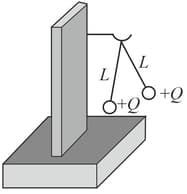When a positively charged sphere is brought near a metallic sphere, it is observed that a force of attraction exists between the two. It means
spheres.

Important Questions on Coulomb's Laws and Electric Field
Identical isolated conducting spheres and have equal charges and are separated by a distance that is large compared with their diameters (figure ). The electrostatic force acting on sphere due to sphere is . Suppose that a third identical sphere, having an insulating handle and initially neutral, is touched first to sphere (figure ), then to sphere (figure ), and finally removed (figure ). The electrostatic force that now acts on sphere has magnitude . What is the ratio ?
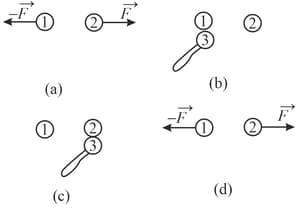
In Figure , particle (of charge ) and particle (of charge ) are fixed in place on -axis, apart. Particle (of charge ) is to be placed on the line between particles and . Figure gives the -component of that force versus the -coordinate at which particle is placed. The scale of the -axis is set by . What is the sign of charge ?
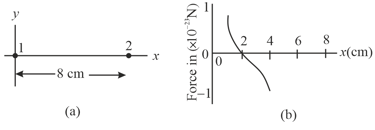
In figure , particle (of charge ) and particle (of charge ) are fixed in place on an -axis, apart. Particle (of charge ) is to be placed on the line between particles and so that they produce a net electrostatic force on it. Figure gives the -component of that force versus the -coordinate at which particle is placed. The scale of the x-axis is set by . What is the ratio ?
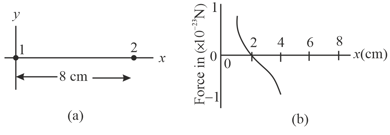
Figure shows an arrangement of three charged particles separated by distance . Particles and are fixed on the -axis, but particle can be moved along a circle centred on particle . During the movement, a radial line between and makes an angle relative to the positive direction of the -axis (figure ) . The curves in figure give, for two situations, the magnitude of the net electrostatic force on particle due to the other particles. That net force is given as a function of angle and as a multiple of a basic amount For example, on curve, at we see that . For the situation corresponding to curve , what is the ratio of the charge of particle to that of particle (including sign)?
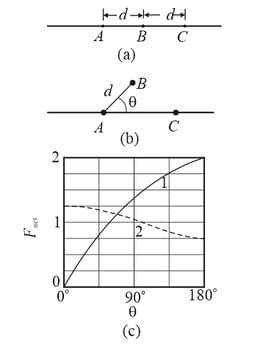
Figure shows an arrangement of three charged particles separated by distance . Particles and are fixed on the x-axis, but particle can be moved along a circle centred on particle . During the movement, a radial line between and makes an angle relative to the positive direction of the -axis (figure ). The curves in figure give, for two situations, the magnitude of the net electrostatic force on particle due to the other particles. That net force is given as a function of angle and as a multiple of a basic amount . For example, on curve, at , we see that . For the situation corresponding to curve (dash line) what is the ratio of the charge of particle to that of particle ?
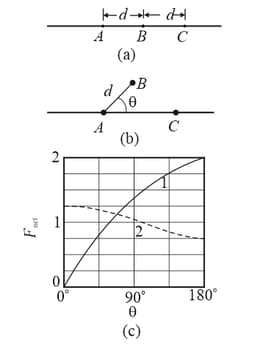
Two small balls having equal positive charge (coulomb) on each is suspended by two insulated string of equal length meter, from a hook fixed to a stand. The whole set-up is taken in a satellite into space where there is no gravity (state of weightlessness). Then the angle between the string and tension in the string is
